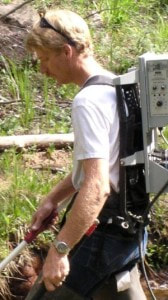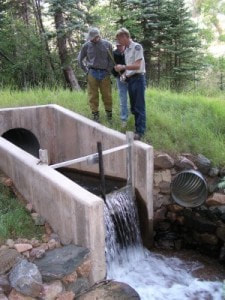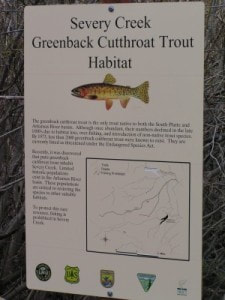Bear Creek Greenback
Cutthroat Trout
Section divider type: wavesOpacity --
position: bottom



|
|
This study finally provided the impetus to those resistant to taking action, to do something to protect the Greenbacks in Bear Creek from the sedimentation.
CMCTU has been raising funds through various methods to support the Bear Creek sedimentation issue. In the fall of 2012 CMCTU applied for and received a Western Trout Initiative grant in the amount of $50,0000.00 for the purpose of addressing the sedimentation issue in Bear Creek in Phase 1 of the plan. Now that the NEPA process is essentially complete (January 2016) you can track progress in and around Bear creek via the National Forest Service, Bear Creek Watershed Restoration Project. PPCTU continues to meet with the Greenback Recovery Team and the Bear Creek Round Table, raise funds for the project, advocate the protection of the trout with agencies and the public including the Colorado Springs City Council and collect water and macro-invertebrate samples. |
|
PPCTU strives to conserve, protect, and restore cold-water fisheries resources and their watersheds in the Pikes Peak Region and throughout the state of Colorado.
|